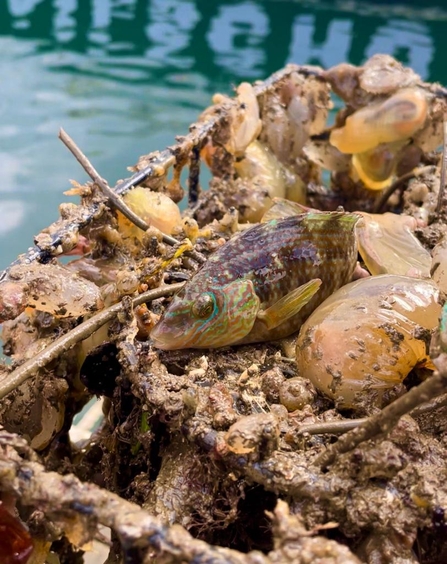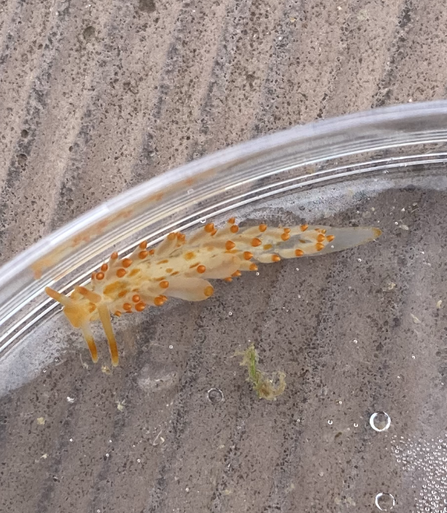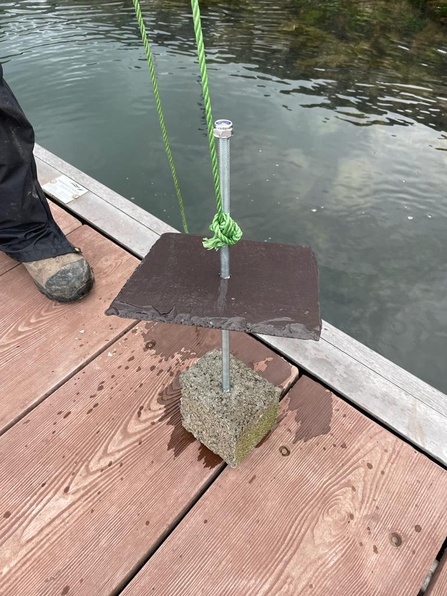Native Oyster Nursery Update
The native oyster nursery will release millions of larvae into Belfast Lough, boosting the endangered species, creating natural reefs for other marine wildlife and cleaning gallons of seawater every day.
New discoveries: Green sea urchin
We have begun to find green sea urchins on the cages. Green sea urchins are smaller than common sea urchins and can be identified by the purple tips of their green spines. They are omnivorous grazers and so will feed on seaweeds, sponges and bryozoans but will also prey on barnacles, muscles and worms. They are often found on rocky shores down to depths of 100m.
Did you know that historically, sea urchins were referred to as ‘sea hedgehogs’ because of their spiny shells and are sometimes called ‘burrs’ in Scotland?

Corkwing Wrasse
A corkwing wrasse was found on one of the cages in August. Corkwing wrasse is a small, abundant wrasse species which can be found in shallow water. They can be identified by the characteristic blue/green stripes on their cheeks and a dark comma-shaped blotch behind each eye.
Did you know that in spring and early summer, male corkwing wrasse may be seen collecting large amounts of seaweed in their mouths and then ramming them into rock crevices to make nests?
Between April and August 2023, the Bangor native oysters grew on average by 7mm in length and 51g in weight.
Glenarm Oyster Nursery

First Nudibranch
In August we found our first nudibranch at Glenarm on the shell of one of the oysters. It is most likely a species called Amphorina andra, a nudibranch which feeds on hydroids. Nudibranchs are a group of marine soft-bodied molluscs that can be found along our shoreline. The name nudibranch means "naked gill" which is a reference to their breathing mechanism, found on the outside of their bodies.
Did you know there are over 195 species of nudibranch in the northwest of Europe and around 3000 known species globally?

Spat Collectors
We have recently started deploying spat collectors at the Glenarm Nursery. We use Bangor blue slate as it has a high calcium carbonate content to allow the larvae to successfully settle. Over time, we will be able to tell whether it is oyster or mussel spat as they develop into more mature bivalves. The number of spat on the slates will give us an idea of how successful the oysters are at spawning.
Did you know that a mature oyster is capable of producing up to 1 million larvae in a single spawning event?
Between April and August 2023, the Glenarm native oysters grew on average 3.5mm in length and 16g in weight.






